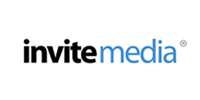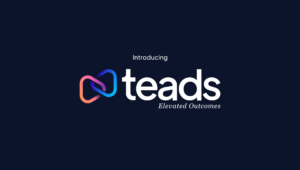Paul Turner Talks Buy-Side Platforms, Automated Ad Trading And The Evolution Of European Display
by Ciaran O'Kane on 11th Mar 2010 in News


ExchangeWire was the first to cover the launch last year of Invite Media’s Bid Manager, a platform that allows buyers to purchase ad impressions across multiple inventory sources while leveraging huge amounts of data. Twelve months on Invite Media has finally moved in to the European market. Their arrival here has generated some intense debate around the role “DSPs” are likely to play in the display eco-system. Most of it I would say has been misinformed. Some senior European supply-side figures, for instance, have shown a worryingly lack of understanding of the display market’s move towards automated trading. Despite their protestations, RTB and automated buying are going to become big areas of growth this year in the European market with Invite Media leading the charge. Paul Turner, Director of International Business Development at Invite Media, spoke to ExchangeWire this week about the company’s offering in more detail, why Europe is ready to embrace the exchange model, and how publishers can benefit from trading non-premium inventory through automated channels.
Can you explain the Invite Media offering in more detail?
PT: Invite Media operates Bid Manager, a universal buying platform that integrates with all of the major RTB Exchanges and Right Media, plus several 3rd party data providers. Bid Manager increases transparency and efficiency, making it easier for intelligent buyers to purchase inventory and improve campaign effectiveness. In terms of the company itself, we’re very much focused on technology, in fact most of our employees are still involved in building and maintaining the platform and User Interface. We do also offer a comprehensive services layer led by a number of very experienced display veterans.
How can your platform help European advertisers and agencies?
PT: Bid Manager is designed to empower the buyer. By giving the buyer more control and more ability to leverage data (either third party or the buyer’s own), more of the campaign budget finds the right audience, which in turn means more spend overall. Agencies benefit by connecting directly to the inventory source and being able to seamlessly move budgets to campaigns that work. By increasing efficiency, and therefore the ability for Agencies to spend budget more effectively, both sides of the buying equation benefit.
How would Invite Media work with a typical agency or advertiser?
PT: This is where we differ from most of our competitors. We can offer an Agency either a completely self-service platform where we give them the ‘keys’ and they manage everything themselves. Or, if an Agency doesn’t quite have the resource to manage the platform themselves, we can offer them a hybrid model where our Managed Services team does much of the heavy lifting whilst at the same time training the Agency’s internal team. We very much see ourselves as a technology platform with a services layer.
Is the European market mature enough for trading platforms like Invite Media? Have we still a long way to go before we see the same take-up as the US?
PT: We certainly hope the European market is ready! I think the global expansion of many of the Agency Holding Company Exchange practices has really helped. I also think that many countries in Europe have seen significant innovation on the ‘Display Service’ side – i.e., companies that can offer outsourced Exchange buying solutions. We work with both models.
Will agencies shift more display spend through automated platforms?
PT: Absolutely – and that’s a good thing for the whole market. The more efficiently budget finds its way to the source (both audience and inventory) the less ‘wastage’ there is in the process. Publishers benefit because more spend is directly flowing to the inventory source. Advertisers benefit because they are able to target campaigns more effectively and put in place workable campaign strategies based on real-time, granular reporting.
How would you differentiate yourself from other DSPs in the European marketplace?
PT: I don’t see any other company being able to offer the mix of Technology and Service that Invite Media provides. I honestly wish I could take every client and prospect to our offices in the US to show them what people are doing day-to-day – whether that’s from a platform development perspective or a campaign management angle. Invite Media really is an exciting company to work for and I think clients enjoy being able to work with a partner and a technology platform that genuinely is market leading. There are of course many features and platform concepts that are very unique to Bid Manager that I can’t go into here, but all of which our clients have pointed out as being extremely differentiated. Also, of course we’re not being complacent and the challenge in Europe will be to ensure we’re able to replicate the US model as much as the market allows and innovate where we have too – this process has been under way for over 4 months now so we’re in a good spot.
Who would Invite Media typically buy from in the European market to aggregate ad inventory? Are you working with exchanges, yield optimisers, publishers etc?
PT: We are integrated with all of the major RTB Exchanges and Right Media. As a company we are inventory agnostic – we’re not a network so we don’t go out and buy inventory on behalf of clients. The danger with a different model (i.e., where the ‘DSP’ offers managed inventory) is that it’s very similar to a Network and ultimately we believe a true DSP shouldn’t be arbitraging. If you’re referring to which supply sources we work with, we are directly integrated with every real-time ad exchange out there, as well as Right Media (my former employer), which includes pub aggregators such as AdMeld and PubMatic.
Does the fragmentation and differences in the European display market require multiple strategies in different countries?
PT: Yes and no. The core value we offer will remain the same – efficiency, transparency, campaign effectiveness. The way we execute will differ by market based on individual nuances. My experience with Right Media has really helped craft a European strategy and we already have beta clients in 4 countries. Of course, much depends on the adoption of Ad Exchanges in each European market.
One of your perceived USPs is the ability to leverage large amounts of data to improve campaign performance. Can you give an example of how that would be typically done?
PT: Because we tie everything to one Invite Unique User ID we can offer the Agency the ability to target by both their own segment data AND that of their chosen third party partners. We’re integrated with several data providers in the US and they basically expose their behavioral segments to select buyers to enable them to buy more intelligently. In other words we’re seeing the separation and decoupling of data and inventory, which, again, we believe is a good thing because it brings new, more informed spend onto a publisher’s inventory. Beyond targeting, our system is also extremely robust at using large amounts of data across thousands of variables to influence bidding and campaign strategies for the purposes of optimization. We’ve seen tremendous results for advertisers by using our system to dynamically and automatically optimizing towards particular ROI goals or conversion targets across the ad exchange landscape in real-time.
Invite Media is a big exponent of RTB. Is the European market ready for trading ad inventory through RTB?
PT: Again, we hope so! Of course we’re governed by how quickly our Exchange partners grow, but there’s definitely a significant amount of inventory available in Europe through Exchanges and this is growing every month. This will only grow as more and more agencies adopt ad exchanges and move more dollars into the ecosystem.
There has been a push back recently from large publishers against the buy-side move towards automated trading. Can Invite Media improve the lot of the publisher? How would you address some of their concerns?
PT: I don’t really understand what the concerns would be. At the most basic level a Publisher doesn’t have to sell through real-time Exchanges. They aren’t forced to! Generally speaking inventory in the RTB Exchanges is remnant inventory which has limited value. By empowering the Advertiser through data, more budget finds its way to the source. As an example, a standard remnant impression with zero user information could be enhanced with either Agency segment data or 3rd party data to inform the buyer that the user is actually someone in market for life insurance – that remnant impression all of a sudden becomes extremely valuable to lots of different advertisers. Only by exposing that inventory in real-time AND layering in data from as many sources as possible is that value realized.
When I look at the US market the trend (ie what we pay for our inventory) is definitely an upward one – Advertisers find what works more quickly and spend more money to perpetuate that performance. I think the real-time Exchanges (AdMeld, PubMatic etc) will eventually evolve to be true inventory specialists, advising clients on what their ‘Premium’ inventory can command and then managing supply to increase the value of the remnant inventory. The final point is that if a Publisher does have a ‘better offer’ than a bid delivered through RTB then that campaign will of course serve.
What’s your view on Mike Nolet’s recent piece on the term DSP – and how the relationship between a DSP and agency is based more on a media IO than a “platform” partnership? How would Invite Media define itself in the present market?
PT: It depends on what your company offers and whether you are in fact a true technology company. Mike is 100% correct that many DSP’s are in fact just another part of the media plan, and interact with the agency in a simple IO. At its core, this is more of a question of what is a true DSP, as many “DSP’s” are just ad networks that have do not have the ability to go beyond being just another media partner. Most DSP’s are really only services companies with lots of excel spreadsheets. The more advanced ones (and really the only true demand side PLATFORMS) are those with technology, like us. This is the exact thing we’re trying to change, which is that agencies need to adopt a platform like Bid Manager and get away from the traditional media plan and IO mentality.
Most of our agency relationships are actually full self-service deployments, whereupon that agency has started a trading desk (very similar to the expertise that ad networks have mastered) and are using the system on a day-to-day basis. There are literally thousands of advertisers now being managed on Bid Manager by agencies that our team is probably not even actively aware of, mainly because the agency is managing everything themselves and there’s no need to involve our team. That extends well beyond a simple “media IO” relationship in my opinion. As previously stated, we can give the Agency full control or we can help them manage their account with our Managed Services team. Either way, our margins are 100% transparent and we don’t arbitrage the inventory.
Are you seeing any interesting trends in the current European market?
PT: Europe is a really hot space for us and I think we offer the right product at the right time. There’ll be those who continue to rally against the evolution in display we’re seeing at the moment and there’ll be those that embrace it. Looking at the US example, those that embrace the new ways of buying and selling will be in a much stronger position. Our challenge is to make sure we continue to offer the best platform and the best possible service.
How do you see the display market developing in the coming twelve months?
PT: Difficult to say. I’d imagine Exchanges will continue to grow. We certainly expect to see significant budgets running through Bid Manager in Europe. I’m sure there’ll be more innovation on the data side, especially in Europe and we may see several of the US data exchanges make their move over. Finally I’d anticipate more Publisher Audience partnerships, perhaps managed by the likes of PubMatic, AdMeld and Rubicon.
AgencyDisplayDSPExchangeProgrammaticPublisherTargetingTrading








Follow ExchangeWire